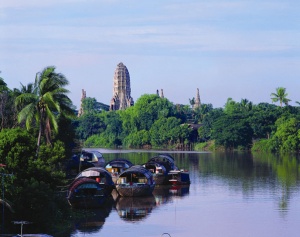Pacific Asia Travel Association predicts strong growth

The Pacific Asia Travel Association (PATA) has revealed its forecasts for travel demand in the 42 destinations within the region, predicting an annual average rate of growth in arrivals of just under seven per cent between 2009 and 2013.
Asia is expected to receive much of this growth, with an average increase of around 7.5 per cent per annum, while North America will average around five per cent and the Pacific between four and five per cent over the period.
Within Asia, the fastest growing sub-region will be south-east Asia with just over eight per cent growth, followed by south Asia with around 7.5 per cent and north-east Asia at just over seven per cent per annum.
Around 15 source regions will generate double-digit growth into Asia Pacific over the period to 2013, with intra-Asia traffic alone fuelling annual gains of around 7.5 per cent and adding more than 76 million additional arrivals to Asia by 2013.
The ones to watch out for here, argues PATA, are south and central Asia into north-east Asia (17 per cent and 14 per cent growth per annum respectively), as well as the Middle East markets, which are also tipped to show substantial growth with gains in excess of ten per cent per annum to 2013.
John Koldowski, head, Office of Strategy Management, PATA said: “This is not surprising, particularly given the enormous rise in air seat capacity on the intra-Asia routes, especially from the so-called low-cost carriers.
“This shift in source markets carries a significant number of issues for operators in the region.
“Many of the long-haul markets have relatively longer lengths of stay, so any decrease in arrivals from these sources, even though relative, will be felt in terms of nights booked and of quite possibly yield.”
International Arrivals
In terms of generating the most physical arrivals however, north-east Asia and the Americas will generate most additional traffic to Asia Pacific.
North-east Asia will add an additional 65 million arrivals to Asia Pacific destinations by 2013, while North America will add close to 18 million more than in 2009.
This will all be largely intra-regional growth, however, with around 83 per cent of the additional arrivals from North America heading to destinations within the Americas, while just under 80 per cent of the additional growth from north-east Asia will be to destinations within Northeast Asia.
Long-haul traffic from Europe to Asia Pacific will still be significant, adding more than 8.7 million arrivals to the Asia Pacific region by 2013, nevertheless continuing to generate a reduced market share as Asian source markets rise in importance.
A similar scenario can be seen for the Americas. Even though the volume of arrivals from that source region is increasing, in relative terms, the share of traffic generated from the Americas will decrease somewhat to 2013.
“That said, it must also be recognised that the new wave of Asian travellers are surprising many operators in terms of their increasingly sophisticated demands and their ability to expect and pay for the very best,” Koldowski added.
WSDE Sports Tourism Expo
One of the most exciting events to be heading to the region over the next year is WSDE Sport Tourism Expo – which will stage its second annual event in Bangkok later this year.
World Sport Destination Expo is the only global exhibition and business forum dedicated to showcasing the booming $600 billion a year sport tourism market - the most rapidly growing sector in travel and tourism.
WSDE presents a much needed annual opportunity for the Sport Tourism industry to come together, not only to conduct lucrative future business deals and source new contacts and markets, but also to gain invaluable insights from the advanced knowledge of market leaders. WSDE is a vital event for those wishing to be part of the growth of the industry’s future.
WSDE 2011 will take place in Bangkok, Thailand - Asia’s Sport Tourism Gateway – from September 27th – 29th 2011.

